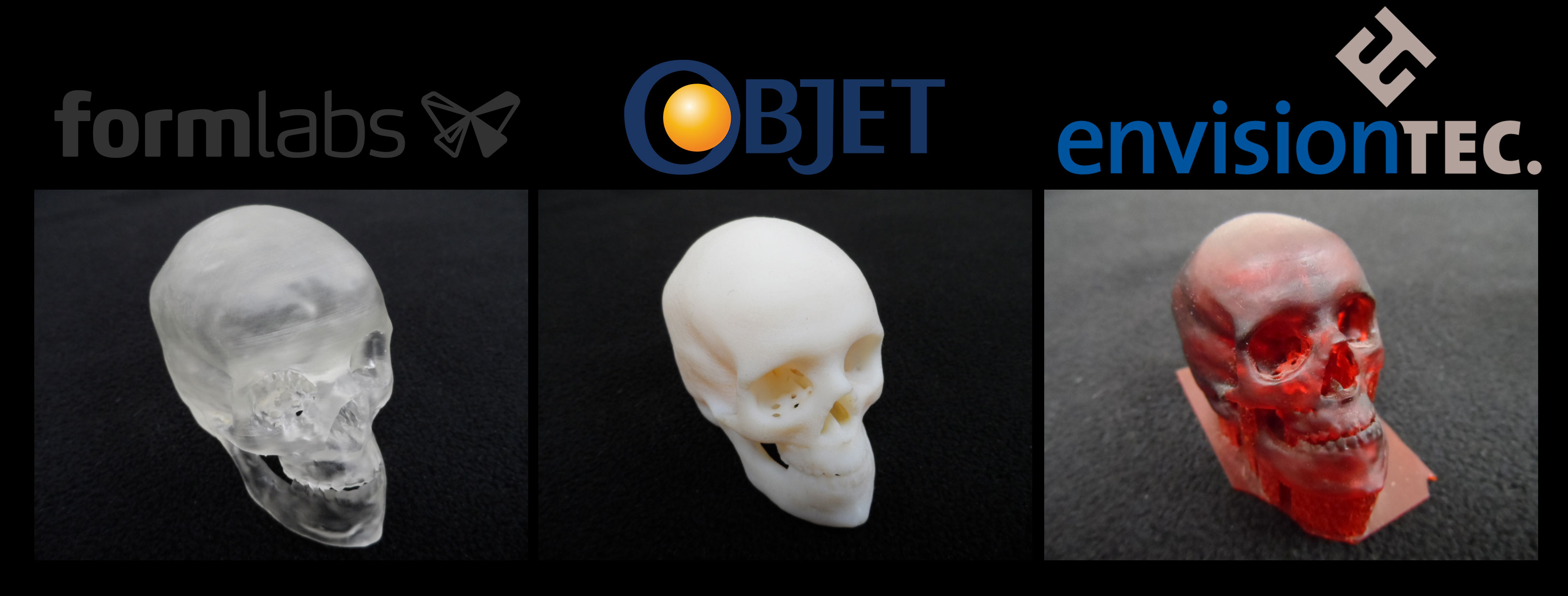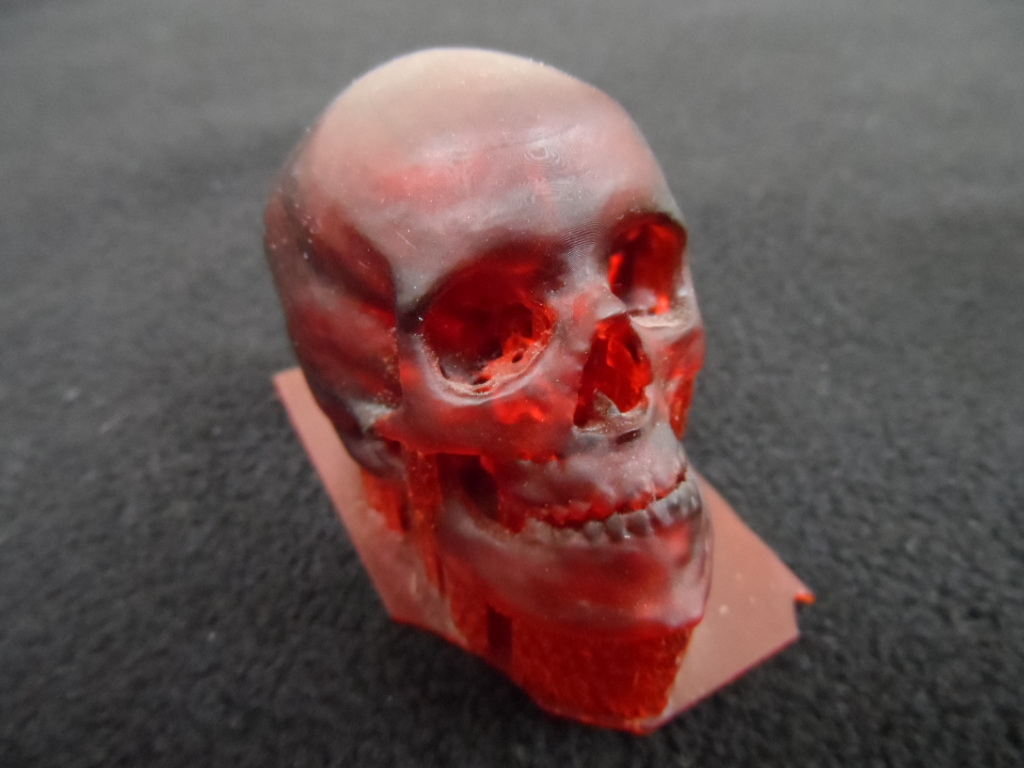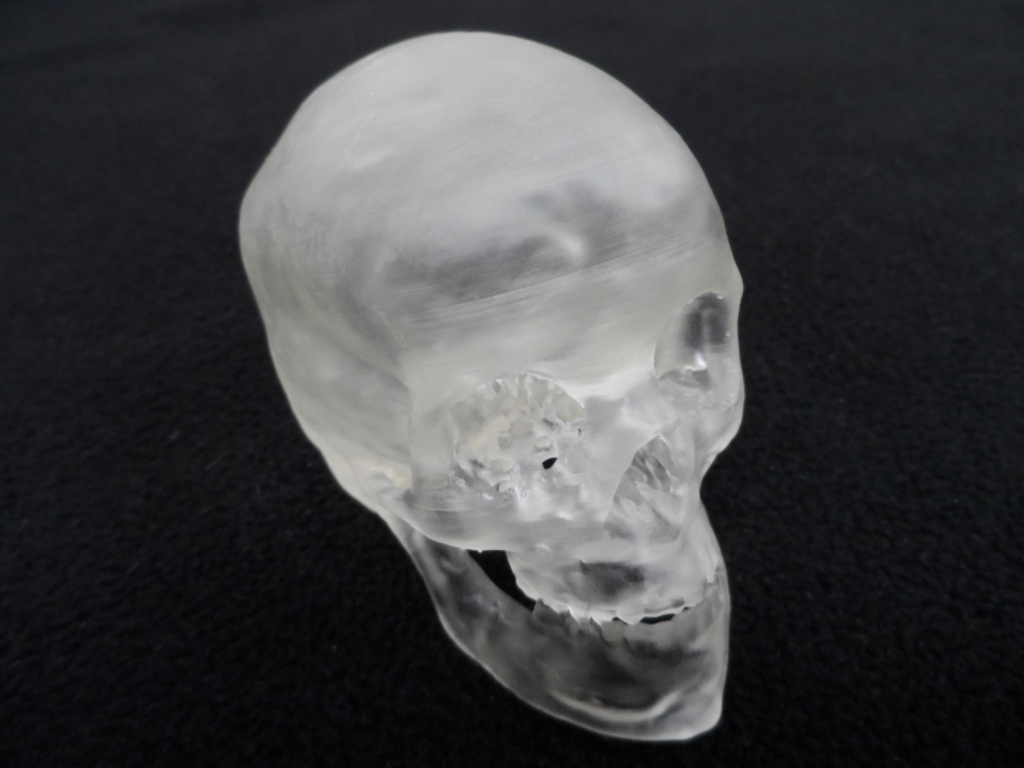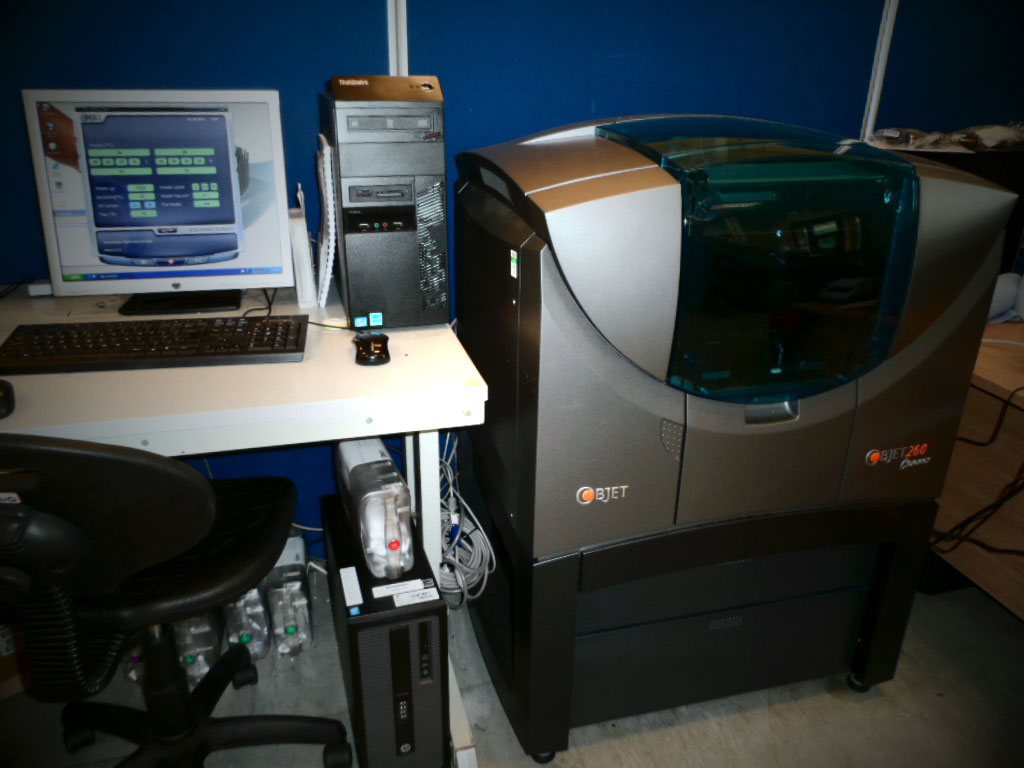I currently run a department for Renishaw plc that uses both conventional and additive manufacturing equipment for the production of everything from early concept models to low volume final production. The department acts as a central bureau serving all of the product divisions of the company. Many of the product divisions are spread across different sites and indeed different countries. Whilst this strategy works well for processes requiring substantial expertise and capital investment, the advent of lower cost 3D printers has meant that the production of prototypes can now be de-centralised.
With this in mind I decided to take the plunge and get one of these lower cost systems. Though as plentiful as cheering Scots during an England world cup exit, none of the filament systems on the market are capable of producing the fine walls and finishes required for the small and intricate components that we are often asked to make. A photopolymer machine was therefore required and after having looked at several technical specs and sample parts I opted for a Form1 3D printer from FormLabs.
I originally ordered my Form1 machine direct from FormLabs on the 8th of January this year. According to the website it was a pre-order for March. I didn’t particularly want to wait that long but ever the glass half full type of person, I decided that by then at least I would be able to collect it from our goods inwards area without having a nasty winter wind blowing up my trouser leg. The problem was that March came and went, as did April ….. and May. I had resigned myself to the fact that June was also going to slip past without a delivery when I finally received an email telling me that the 3D printer had shipped. Annoyingly (to put it mildly) this was followed by another email from FormLabs — sent 16 hours later the same day — proudly announcing the launch of their Form1+ machine, an upgraded machine that was retailing at the same price as the one that I had just waited five and a half months for. Unsurprisingly, I was not what you would call best pleased.
When the machine had cleared customs and finally arrived, I wanted to be mad, I wanted to be really, really angry. I wanted my mind to be filled with the sort of rage that you normally only reserve for people who look blankly at you with their bloodshot eyes from beneath the rims of their baseball caps just after they’ve swung their Citroen Saxo into the parking space that you were just lining up to reverse into. The problem was that I was just too excited about my new toy. About one hour after getting the machine out of the box my excitement changed to the sort of feeling that I can imagine an 8 year old girl would feel if she bumped into Harry Styles and he offered to take a selfie with her. This is because by then it was already set up and printing its first part.
It’s no exaggeration to say that I have had additive manufacturing machines delivered to me that have sat around for weeks un-crated waiting for a service engineer to install and commission them. This has then been followed by training courses that have the same levels of excitement and duration as a five day test match between the snails and slugs reserve 11 cricket teams. Apart from being quick, it was so easy to set up that a media studies student could have managed it (almost).
To give context to the evaluation of the system, I decided to benchmark it against 3D printers that we already have at Renishaw, which are used to produce the same class of parts i.e. liquid photopolymer printing systems. For this reason I have compared it against an Objet 260 Connex 3D printer from Stratasys and an envisionTEC Perfactory 3D printer. I printed an anatomically correct human skull on all three machines. The part was scaled down to the point where its major length (from front to back) was 50 mm. This gave a good range of wall thicknesses, fine and coarse detail and lots of lovely curved surfaces.
Surface finish: The envisionTEC Perfactory gave the best surface finish both visually and physically. The Form1 came a close second with the Objet well behind especially on vertically built sections. All systems build with very thin layers but the misalignment between layers on the Objet machine meant that it was less like the ‘smooth as a baby’s bottom’ finish of the Perfactory and more like ‘smooth as its grandmother’s bristly chin’.
Build envelope: The Objet easily has the biggest build envelope of the three with the Form1 narrowly beating the Perfactory in the X and Y (but not Z) axes. This is important as it means that not only can the Objet build larger parts but that it can also build more parts at the same time.
Resolution: The Perfactory was once again the superior machine in this category but again not by much. The very fine wall sections of certain sections of the skull suited the Perfactory’s abilities well. Second place in this category went to the Objet with the Form1 giving the lowest level of detail but to be fair it was pretty close between all three machines.
Ease of use: The Perfactory was a very poor loser here being miles behind the other two platforms for ease of use. This is due to the amount of pre-build work required to set up the build file and more especially the machine. After that it became a tough decision as both of the other two platforms are very strong when it comes to ease of use. In the end I decided to award this category to the Form1 because although both have well thought out and easy to use software, the pre-build hardware setup on the Form1 is just so quick and simple. It basically consists of switching the machine on and topping up the resin between the min and max lines on the side of the build tray.
Price: Value for money is a difficult one to judge — and quantify — because it’s basically a matter of perception. Any system’s perceived value will depend on how well it meets the needs of the user/purchaser and these needs (and thus the priorities of characteristics) will vary from user to user. Return on investment will also depend on what each system will be used for, so again, it will vary wildly. Price, however, is more easy to quantify and compare so let’s just stick to that. Price paid will depend on discounts from list price, options taken, regional variations etc, etc so it’s not possible to be exact, even on this point. It is, however, easy to give order of magnitude differences. Roughly speaking then for the money that you would spend to buy the Objet machine you could buy two of the Perfactory machines. This sounds pretty impressive, until you realise that for the same money you could buy 36 Form1 3D printers.
In summary then the Form1 is incredibly simple to set up and use, gives impressive build results and for the price paid punches well above its weight. In Stereolithography terms, it simply doesn’t produce the sort of results that you would get from a Viper SLA system from 3D Systems, but then again its price means that it is a completely different class of machine. Of course talk is cheap (unless you’re a highly paid marketing executive) and I believe that the real proof of satisfaction with any purchase is to answer the question of whether you would do it again, knowing what you do once you’ve bought it. With that in mind I can tell you that we will be buying at least two Form1+ machines in the next few weeks. However having experienced FormLabs delivery performance, I’m not expecting to get them in time to build the novelties for this year’s Christmas crackers.
Stereolithography has always been the reserve of the professional users who can afford to go high end but the emergence of this machine into a new SL market has meant that FormLabs has successfully breathed new life into an old technology.









